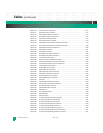
10007175-02 KAT4000 User’s Manual
1-1
Section 1
Overview
The KAT4000 is a single-slot Advanced Telecom Computing Architecture (AdvancedTCA
®
,
ATCA™) carrier with up to four Advanced Mezzanine Cards (AMC) expansion modules. This
expansion capability enables a wide variety of control and packet processing applications
such as WAN access, traffic processing, signaling gateways, media gateways, and many
others. ATCA is an open architecture telecom platform as defined by the PICMG
®
3.0 Revi-
sion 2.0 AdvancedTCA™ Base Specification.
The KAT4000 features on-board Ethernet and PCI Express switches for the AdvancedMC
Common Options Region, where the majority of control plane data flows, and a flexible
modular Fat Pipe Switch (FPS) to address data plane traffic in the AdvancedMC Fat Pipes
Region. The FPS is implemented using a plug-over module, enabling simple maintenance
and a rapid upgrade path when a newer switch fabric is required. An optional on-board pro-
cessor gives users additional processing power and can be used to off-load system manage-
ment or OA&M functionality.
The KAT4000 is an intelligent Field Replaceable Unit (FRU) and implements a redundant
System Management Bus (SMB). It also fully supports the Intelligent Platform Management
Interface (IPMI) with AdvancedTCA extensions to support standards-based shelf manage-
ment, allowing it to be monitored by a local shelf management controller or by a remote
OA&M system over Ethernet.
COMPONENTS AND FEATURES
The following is a brief summary of the KAT4000 hardware components and features:
Processor: The Central Processing Unit (CPU) is a Freescale
®
Semiconductor MPC8548 PowerQUICC
III™ processor, operating at a rate of up to 1.3 GHz with a 533 MHz DDR2 bus. The
MPC8548 contains 32-kB separate level-one (L1) data and instruction caches, and 512-kB
L2 cache. The processor has a local bus that connects to the socketed, NOR, and NAND
flash; Ethernet core switch; fat pipe switch module; and PLD. The processor also has a
COP/JTAG for debugging purposes. Chapter 3 provides more information.
SDRAM: The KAT4000 includes a 64M x 72-bit Double Data Rate Two (DDR2) Synchronous Dynamic
Random Access Memory (SDRAM) Small-Outline Dual In-line Memory Module (SO-DIMM).
Options include 512 megabytes and 1 gigabyte. The interface implements eight additional
bits to permit the use of Error-Correcting Code (ECC). SDRAM is only implemented on the
processor KAT4000 board configuration. “On-Card SDRAM” on page 6-2 provides more
information.
Flash: The KAT4000 includes three independent Flash regions—socketed, NOR, and NAND. The
blade is capable of booting from either an 8-bit, 32-pin PLCC ROM socket up to 512 kilo-
bytes in size, or from a 16-bit NOR Flash region that consists of one or two Flash devices.


















